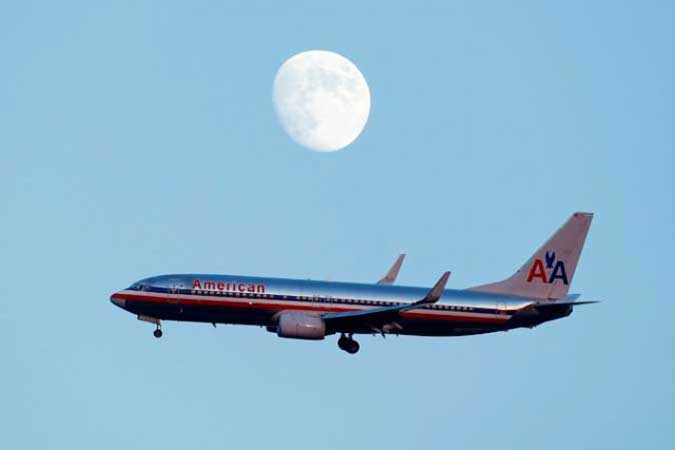FRESH coronavirus disease 2019 (COVID-19) outbreaks and lockdowns have further delayed an international travel revival in Asia, where movement remains tightly restricted even in places where the virus has been contained.
While Hong Kong has brought new cases down to practically zero, its draconian quarantine regime makes travel unappealing for the masses. A plan for quarantine-free travel with Singapore was shelved after an outbreak there. Malaysia went into a two-week lockdown from June 1 following a jump in infections. Low vaccination rates haven’t helped get things moving.
“The slow rollout combined with a commendable but equally near impossible desire for a zero-based level of infections has resulted in authorities being ultra-cautious in their market reopening,” said Mayur Patel, head of Asia Pacific at OAG Aviation. “In Europe and North America, there is a much wider acceptance that we will have to learn to live with Covid as much as we live with other common diseases and viruses.”
Like Taiwan, Singapore has long been lauded as one of the best places to be during the pandemic, only for infections to flare recently. Prime Minister Lee Hsien Loong said Monday that school children would be inoculated and every adult who wants a shot would have one by early August, pledging to not get left behind as the world begins to reemerge from the pandemic.
“We will have to learn to carry on with our lives even with the virus in our mindset,” Mr. Lee said in an address to the nation. Singapore is under tight social-distancing measures until June 13 following a recent outbreak. About 40% of the population has received at least a first vaccine dose.
Almost 2 billion vaccines have been administered globally, with the US and UK among those leading the way. China has given out more than 680 million doses, but rates are much lower in other parts of Asia, including tourist destinations Thailand and Vietnam, where enough shots have been given to cover only 2.6% and 0.6% of the populations, respectively.
With summer holidays approaching in the northern hemisphere, global aviation capacity rose to almost 60% of 2019 levels — a 3 percentage-point jump in a single week, the most in at least a month, according to Bloomberg’s weekly flight tracker, which uses OAG data to monitor the pulse of the comeback.
Some markets even managed to claw back modest gains: Capacity in Russia has almost returned to 2019 levels, while Nigeria is up 7.3% from that year. The US recovery picked up speed — it’s now down 23% from 2019 levels.
INCREMENTAL PROGRESS
Memorial Day gave the US a significant bounce, with airlines carrying the most passengers in almost 15 months on the Friday before the long weekend.
By contrast, Asia — long the leader in the global aviation recovery — slipped again in recent weeks, falling behind the US rebound, the data show.
With an envious eye on vaccine progress and borders opening in other parts of the world, some businesses in Asia are rolling out unusual incentives to encourage people to get inoculated. Among them, a brand new, $1.4 million, 42-square-meter Hong Kong apartment is up for grabs in a lucky draw for vaccinated residents, while Australia’s Qantas Airways Ltd. is offering “mega prizes” including unlimited flights for a year.
“The relatively slow pace of vaccinations continues to undermine the region’s economic recovery, in particular, the travel and tourism sectors,” Subhas Menon, director general of the Association of Asia Pacific Airlines, said Monday as data showed international air passenger volume in the region in April was 3.5% of the level reported in the same month in 2019.
A Collinson survey of 46,830 people globally found about 78% of respondents would travel as long as more people get vaccinated, though it didn’t specify a number. People were also willing to use vaccine passports and take pre-departure tests if it meant they could travel. Quarantine was easily the biggest deterrent for respondents everywhere.
SUMMER WASHOUT
Flights within Asia to popular beach and cultural destinations are still way off pre-pandemic levels, and in some cases have slid further since the start of 2021. Hong Kong-to-Bangkok flights have fallen by about 85% from their level this time two years ago. Singapore to the tropical Thai island of Phuket is even lower, though the route has picked up from the start of the year when there were no flights at all, Cirium data show. Bali routes have flatlined as the Indonesian island remains shut off to international arrivals.
Thailand has been battling to overcome virus outbreaks and revive tourism, a critical part of the Southeast Asian nation’s economy. Phuket is due to reopen to fully-vaccinated foreign visitors on July 1 — Qatar Airways for one said it will resume four weekly flights there — followed by other destinations in October. Even so, Thai authorities have warned it could take another five years for tourism to fully recover in the country.
Cargo services out of Asia are proving more resilient thanks to continued demand for products from major exporters such as China and Japan.
As Asia’s tourism recovery has stalled, restrictions are easing in places like Europe. That will bring challenges, with passenger traffic in the region set to almost triple from 47 million in May to 125 million in August, Airports Council International Europe said Monday.
Managing the increase will “amount to an unprecedented operational challenge” due to factors including space constraints from physical distancing measures, longer passenger processing times and multiple Covid checks.
While airlines and airports are grappling with the problems of too little service, for others there are concerns of being overwhelmed.
“The level of both uncertainty and complexity in planning for the restart is just mind blowing for now,” ACI Europe Director General Olivier Jankovec said. “With each passing day, the prospect of travelers enduring widespread chaos at airports this summer is becoming more real.” — Bloomberg

